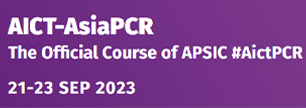


- NEWS
-
-
Scientific LibraryAcute Coronary Syndrom ASCVD Prevention Bifurcation Stenting Cardio-Oncology Congestive Heart Failure DAPT Duration Drug Coated Balloon Fractional Flow ReserveCases VideosE-LearningIndustry Insights
- LIVE REVIEW
-
 Article Link
Article Link

Utility of intravascular ultrasound guidance in patients undergoing percutaneous coronary intervention for type C lesions
Wakabayashi K, Lindsay J, Laynez-Carnicero A et al.
KEYWORDS
IVUS guided PCI; type C lesions; DES; outcome
BACKGROUND - Percutaneous coronary intervention (PCI) of complex lesions (i.e., American College of Cardiology/American Heart Association class type C) remains challenging and the outcome may be compromised. The use of intravascular ultrasound (IVUS) to guide PCI was suggested to improve outcome.
METHODS - A cohort of 1,984 patients who underwent PCI to type C lesions in our center from April 2000 to March 2010 was identified. Using propensity score matching with clinical and angiographic characteristics, we identified 637 patients who underwent IVUS guidance and 637 patients who had only angiographic guidance PCI. Major adverse cardiovascular events (MACE), a composite end-point of all-cause mortality, Q-wave myocardial infarction and target lesion revascularization, were compared between the 2 groups.
RESULTS - After propensity score matching, baseline clinical and angiographic characteristics were well matched. Patients undergoing IVUS-guided PCI had less predilatation and more postdilatation, and were treated more often with cutting balloon. Final diameter stenosis was significantly smaller in the IVUS-guided group (3 ± 11% vs. 7 ± 19%, P < 0.001), resulting in higher angiographic success compared with the non-IVUS-guided group (97.9% vs. 94.8%, P < 0.001). The incidence of MACE was significantly lower in the IVUS-guided group compared to the angiography-guided group (11.0% vs. 15.6%, P = 0.017) as was cardiac death (1.9% vs. 4.4%, P = 0.010).
CONCLUSION - IVUS-guided PCI for complex type C lesions is associated with better outcome and should be considered for these lesions.
©2012, Wiley Periodicals, Inc.




















